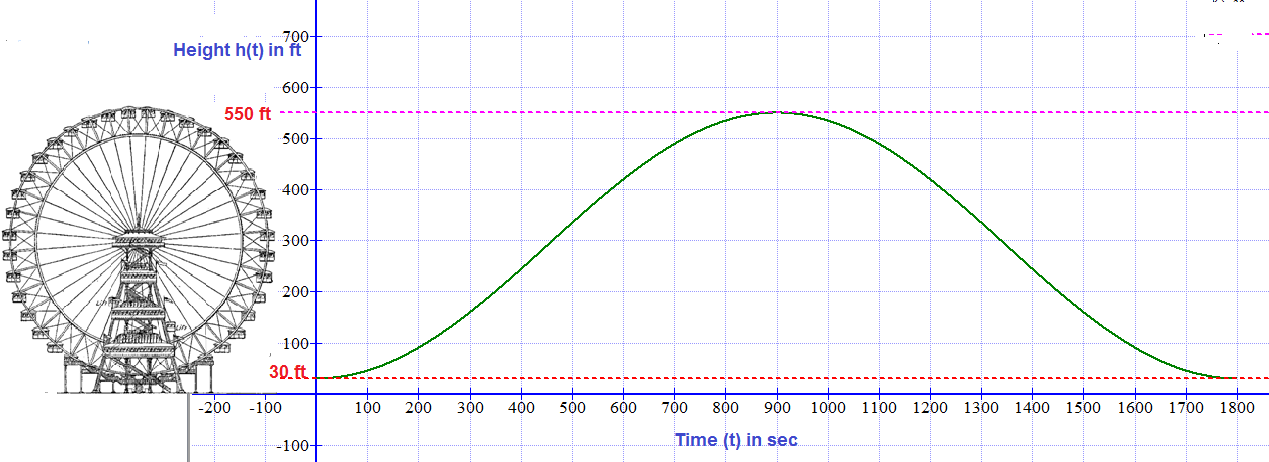A Ferris wheel is 520 feet in diameter & reaches a height of 550 feet. One complete revolution in 30 minutes. Passengers get on & off at the bottom, the lowest point. What is the cosine function that models the riders position & time since boarding?

1 Answer

Given that a Ferris wheel is 520 feet in diameter & it reaches a maximum height of 550 feet. And time required for one complete revolution is 30 minutes=1800s.
So any seat at the periphery of the wheel undergoes a periodic motion of amplitude equal to the radius of the wheel i.e.
The minimum height of any seat at its lowest position at time
As one complete revolution of the wheel requires 30 minutes. We can say the period of circular motion of the wheel is
So the height of any seat at time

